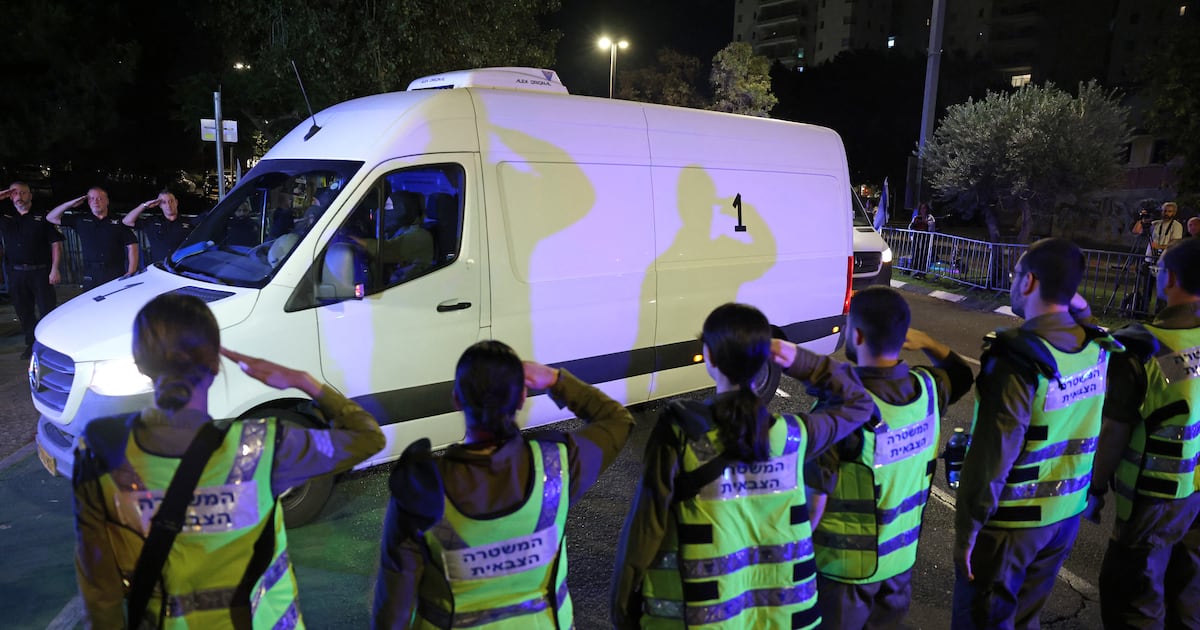Israel has decided to proceed with opening the Rafah crossing between Gaza and Egypt and allowing the transfer of humanitarian aid after the return of the bodies of four hostages, Israeli public broadcaster Kan reported on Wednesday.
Israel cancelled planned measures against Hamas that included halving the number of aid trucks entering the enclave, it said.
The militant group handed over the remains of four hostages to the International Committee of the Red Cross on Tuesday night, bringing to eight the number of bodies transferred since the US-brokered ceasefire took hold, leaving 20 to be accounted for.
Hamas said it was facing obstacles as not all the burial sites had been identified.
Three of the four bodies returned by Hamas late on Tuesday were identified by their families early on Wednesday as Ouriel Baruch, Tamir Nimrodi and Eitan Levy.
The Red Cross, which is overseeing the transfer of remains, warned on Monday that the retrieval was a “massive challenge” given the difficulties of finding bodies in Gaza’s rubble, and could take days or weeks.
But Israel responded severely, accusing Hamas of deliberate delays. It announced the halving of the number of aid trucks allowed into Gaza to 300 a day, and postponed the opening of a major aid crossing point into Gaza from Egypt at Rafah, both violations of the ceasefire agreement brokered by US president Donald Trump.
That agreement led to the release of the last 20 living Israeli hostages by Hamas on Monday, the freeing of nearly 2,000 Palestinians from Israeli custody and a partial Israeli withdrawal from Gaza.
But the next steps, aimed at entrenching the truce and moving towards a lasting peace, are fraught with risk.
Mr Trump urged Hamas to release the remaining bodies, saying it was necessary to enable the next phase of the Gaza plan. “A big burden has been lifted, but the job IS NOT DONE. THE DEAD HAVE NOT BEEN RETURNED, AS PROMISED!” he posted on social media. “Phase Two begins right NOW!!!”
Early tensions in the ceasefire were widely expected as Hamas and Israel sought to gain advantage during the implementation of the ill-defined 20-point plan.
The crossing was due to open on Wednesday in line with the agreement reached last week, which called for a surge of aid at levels last seen during the short-lived ceasefire in March. During the war, Israel had shut down entry and exit routes, largely blocking off food and medicine, which in turn caused a famine in large parts of Gaza.
The ceasefire plan also called for “all hostages, alive and deceased” to be returned within 72 hours of the agreement’s acceptance, but provided a mechanism if that did not happen, saying that Hamas should share information about any remaining deceased hostages and “exert maximum effort to ensure the fulfilment of these commitments as soon as possible”.
After the celebrations on Monday, tensions rose throughout a day of sporadic violence in Gaza.
Israeli forces, which pulled back from Gaza City and some other parts of Gaza on Saturday, opened fire on civilians who approached their positions in two separate incidents, reportedly killing six. Under the ceasefire deal, Israeli forces have pulled back to a so-called yellow line but still hold slightly more than half of Gaza.
Mahmud Bassal, a spokesman for the Gaza civil defence agency, said five people were killed by drones as they inspected their homes in the Shujaiya district of Gaza City and another died in a drone strike south-east of Khan Younis city.
The Israeli military said its forces had opened fire after repeated warnings to “suspects” who had been identified as threats after approaching their positions in the first incident and a former Hamas arms cache in the second.
Hazem Qassem, a Hamas spokesman, said the shootings had broken the ceasefire arrangements and Israel was trying to “evade its commitments to the mediators”.
There were further reports of shootings, beatings and firefights across much of Gaza as Hamas continued efforts to reimpose its authority in the territory, sending armed fighters on to the streets and targeting those opposed to its continued rule or aligned with Israel.
In a video circulated late on Monday, Hamas fighters dragged seven men with hands tied behind their backs into a Gaza City square, forced them to their knees and shot them from behind as dozens of onlookers watched from nearby shopfronts.
Mr Trump has given his blessing to Hamas to reassert some control of Gaza, at least temporarily.
Israeli officials, who say any final settlement must permanently disarm Hamas, are yet to comment publicly on the reappearance of the group’s fighters on the streets.
On Tuesday night, Mr Trump said Hamas would be forced to put down their weapons, telling reporters: “If they don’t disarm we will disarm them and it will happen quickly and perhaps violently.” – Reuters/Guardian

